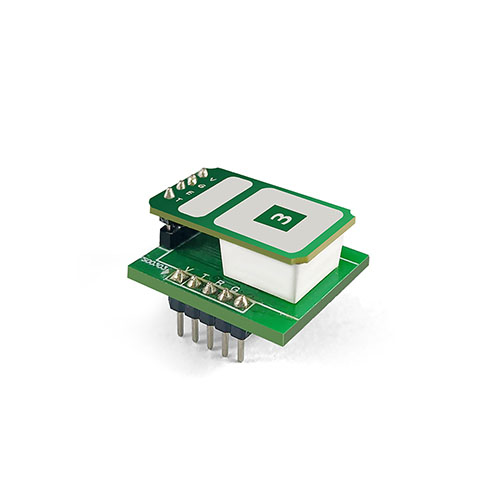Instrument used to measure carbon dioxide
Do you know how much carbon dioxide is in the air? Do you know what impact carbon dioxide has on our lives and the environment? A carbon dioxide detector is an instrument used to measure carbon dioxide. It is widely used in industry, agriculture, environmental protection, medical care, education and other fields, and is of great significance and value.

Carbon dioxide monitor working principle
There are two main working principles of carbon dioxide monitor: non-dispersive infrared (NDIR) and electrochemical (EC). Both principles use the interaction of carbon dioxide molecules with light or electricity to measure their concentration, but the specific implementation methods and effects are different. Let’s take a look at them separately.
NDIR CO2 Sensor Module utilizes the absorption characteristics of infrared light by carbon dioxide molecules and conducts quantitative analysis of carbon dioxide in the air through an optical system composed of infrared light sources, optical filters, detectors, etc. This kind of detector has the advantages of high accuracy, high stability, long life, and low maintenance cost, but it also has the disadvantages of high price and vulnerability to temperature and humidity.
The electrochemical detector uses the redox reaction of carbon dioxide molecules on the electrode surface to reflect the carbon dioxide concentration in the air through current signals. This kind of detector has the advantages of small size, low price, and fast response speed, but it also has the disadvantages of low accuracy, poor stability, short life, and the need for regular calibration.
The performance characteristics of Carbon dioxide monitor mainly include the following aspects
Measuring range: refers to the maximum and minimum carbon dioxide concentration that the detector can measure, usually in ppm (parts per million) or % (percentage). Different application scenarios have different requirements for the measurement range, such as greenhouses. Generally requires 0-5000 ppm, while urban air generally requires 0-1000 ppm.
Accuracy: refers to the error range between the detector’s measurement results and the true value, generally in ±ppm or ±%. The higher the accuracy, the smaller the error, and the more reliable the measurement results.
Resolution: refers to the minimum change value of carbon dioxide concentration that the detector can distinguish, usually in ppm or %. The higher the resolution, the more sensitive the detector is and can capture more subtle changes.
Response time: refers to the time it takes for the detector to receive the carbon dioxide signal and output the result, usually in seconds or milliseconds. The shorter the response time, the faster the detector can reflect the current situation in a timely manner.
Stability: refers to whether the performance parameters of the detector remain unchanged or change very little during long-term use. The higher the stability, the more reliable the detector and the lower the maintenance cost.
Temperature and humidity compensation: means that the detector can automatically adjust its internal parameters according to changes in ambient temperature and humidity to eliminate the impact of temperature and humidity on the measurement results. The better the temperature and humidity compensation, the more accurate the detector will be.
Display mode: refers to how the detector displays the measurement results to the user. Common ones include LCD display, LED display, digital tube display, etc. Different display modes have different characteristics such as clarity, brightness, and color.
Output mode: refers to how the detector transmits measurement results to external devices. Common ones include analog signals, digital signals, wireless signals, etc. Different output modes have different compatibility, stability, security and other characteristics.
Alarm function: means that the detector can emit sound, light or other prompts when the carbon dioxide concentration exceeds the set threshold to remind the user to take corresponding measures.
Carbon dioxide monitor common areas
- Carbon dioxide monitoring in factories, workshops, greenhouses, clean rooms and other industries and agriculture.
- Ventilation control and environmental quality monitoring required in homes, villas, office buildings, conference rooms, classrooms and other places.
- Ventilation control and environmental quality monitoring in public places such as hotels, exhibition halls, hospitals, shopping malls, bars, restaurants, airports, train stations, entertainment halls, theaters, etc.
- Units that produce and use carbon dioxide gas, etc.







